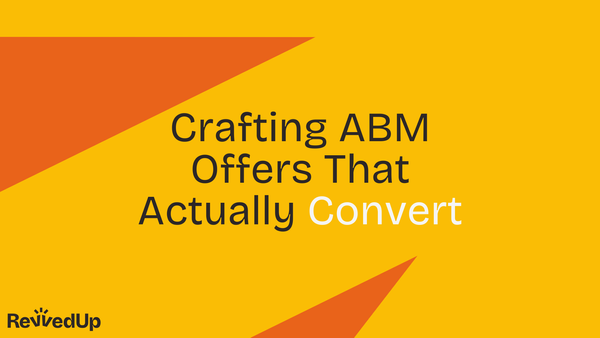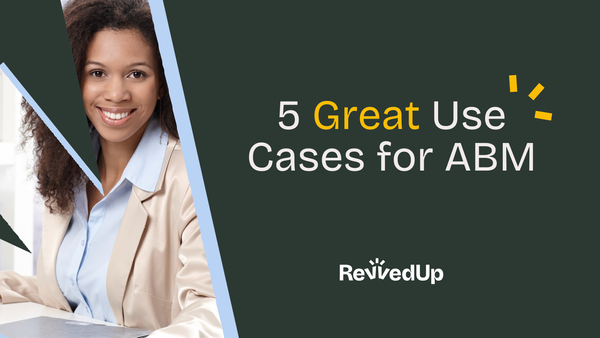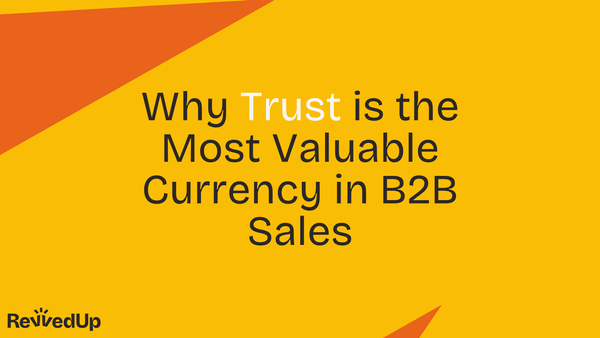Crafting ABM Offers That Actually Convert

Let’s face it—most ABM (account-based marketing) offers fail because sales and marketers get overly eager. They push too hard, too quickly, without offering real value first.
In a bid to get results, we actually harm them.
If you're seeing low response rates from your campaigns, chances are you’re guilty of this too.
The good news?
Creating offers that actually convert isn't magic—it's about carefully matching value, engagement, and commitment.
Here’s exactly how you can do it.
Understanding the Anatomy of an Effective ABM Offer
First things first: an ABM offer isn't just the last sentence in your outreach message. It’s a deliberate micro-commitment—a small step your prospect willingly takes because they see immediate value.
Whether it's an email, LinkedIn message, or direct mail, each touchpoint must have an offer tailored precisely to your prospect's current situation and interests.
It’s important to tailor these Calls to Action (CTAs) to the stage and size of your accounts that you’re reaching.
And if you’re not looking for your prospect to take a specific action, then it is ok to run purely awareness ABM campaigns in some circumstances, which means you don’t need a specific CTA…but if you don’t include one, don’t expect positive replies to come flying in!
The Two-Axis Matrix to Calibrate Your Offers
Getting offers right involves balancing two main dimensions:
1. Account Value
How crucial is this account or prospect to your business? Is this a strategic account with a significant potential deal size, or a lower-tier account?
2. Engagement Level
Is the account completely cold, or have they already shown signs of engagement?
Here’s how this looks in practice:
High-Value, Cold Accounts
For high-value, strategic accounts that aren’t yet engaged:
- Ideal Offer: Deliver highly personalized, low-friction content. Customized industry reports, tailored insights, or a quick, valuable read that directly references their business. You could even ask them to join you on your podcast as a way to engage them in a non-salesly way.
- Commitment Level: Minimal—like reading a tailored one pager, or saying yes to customised video explaining how your offer might fit their needs
High-Value, Warm Accounts
If prospects have shown engagement, it’s worth investing more heavily:
- Ideal Offer: Exclusive experiences such as executive roundtables, tailored workshops, or private dinners with respected industry figures.
- Commitment Level: Higher—but the value feels clearly worth the prospect’s time.
Lower-Value, Cold Accounts
For lower-tier prospects or cold accounts:
- Ideal Offer: Easily accessible, valuable resources like industry benchmarks, interactive ROI calculators, or brief explainer videos.
- Commitment Level: Virtually frictionless—single-click, ungated access, with less need for up-front customisation on your end. (NB here…with the power of AI, you can promise a bespoke, tailored follow-up offer without it taking lots of resources to deliver it from your end).
Lower-Value, Warm Accounts
For prospects who are engaged but less strategically critical:
- Ideal Offer: Community-focused events like webinars, "ask me anything" sessions, or topical group discussions led by credible voices.
- Commitment Level: Manageable, with easy signup and minimal barriers.
The Difference Between a Hook and an Offer
One thing to note is that hooks and offers can get confused, so its worth clarifying.
- Hook: This grabs immediate attention—think provocative insights or compelling industry data right at the top of the message.
- Offer: This prompts action—whether downloading content, attending an event, or scheduling a chat.
A classic mistake folks make is missing one or the other, because they’re so focussed on talking about their solution.
If you miss the hook, they probably won’t give you enough attention to reach the offer.
Equally, if you nail the hook but mess up the offer with too big an ask or limited value promised up front, then you’ll never know they had some interest in the first place.
The most common mistake here is asking them to ‘hop on a call’ for 15 minutes with one of your reps…when it’s literally the first piece of communication they ever received from you.
Remember: you wouldn’t propose marriage on a first date, so don’t ask prospects for a meeting without building some trust and interest first!
Real-World ABM Lessons: Wins and Losses
A Pitfall to Avoid: Getting Segmentation Wrong
Here's a cautionary tale—a peer once ran an ABM campaign aimed at senior decision-makers, accidentally including junior employees in the outreach.
While enthusiasm from these lower-level recipients was high, the exclusive event risked losing its prestige with the target decision-markers.
Quick thinking helped segment the experience into VIP and standard tiers, so it delivered the right results on the day... but not without some stressful deliberations ahead of time.
The takeaway? Double-check your audience segmentation—every time!
Why “Quick Call” Offers Rarely Work
We’ve all seen the typical cold outreach email: “Hop on a quick 15-minute call to learn more.”
But let’s be honest, this rarely feels valuable to the prospect. The offer screams, “I want your time,” without promising anything substantial upfront. Hence, these outreach attempts often fail.
A Proven Winner: Peer-Led Events
Contrast this with peer-driven workshops or dinners. Why do these succeed consistently?
They offer immediate, clear benefits—education, networking opportunities, and personal status. Prospects see these invitations as valuable opportunities rather than sales pitches.
For higher conversions, don’t forget to mention respected peers attending the event to reinforce value. And don’t neglect basics—always confirm geographical relevance.
It’s a good idea to have them select their food preferences too - this added commitment helps increase attendance rates.
Balancing Risk and Investment in Your ABM Events
Hosting events can feel risky, especially with cold prospects. To manage this, try the following approach:
- Lower-cost breakfasts or workshops: Perfect for new, less qualified prospects. Introduce your brand without overspending.
- Higher-cost, exclusive dinners: Reserve these for prospects who’ve been fully pre-qualified, or shown genuine interest/engagement, ensuring your budget aligns with potential returns.
Some other high performing offers you can try:
- Inviting them to join you or your founder/CEO on your podcast (if you run one)
- Inviting them to contribute to an industry report (just be clear why you picked them and what specific expertise you’re looking for)
- Sharing a unique piece of research and industry insight that might give them an edge in their role
- Offering a personalised Loom video, taking them through how you could add value to their business
The Power of Relevance
When it comes to offers, relevance isn't optional—it’s essential.
Offers that come after generic messages are easily ignored, while tailored outreach significantly boosts engagement (and the likelihood the offer will convert).
Leverage insights from tools like RevvedUp to write fully tailored campaign messaging; or do your own research to reference prospects' specific challenges, achievements, or industry trends.
But at least get the basics right - I literally just got invited to a VIP dinner…thousands of miles away on the West Coast of America! D’oh.
Going beyond basic types of personalization, enhance your ABM campaigns with insights-driven custom snippets:
- Reference the prospect’s recent LinkedIn activity or company news.
- Mention mutual connections or respected industry figures attending your events.
- Tailor content to address specific pain points identified through your research.
Just make sure it's timely, accurate and relevant - to the end recipient, the offer and what your company does.
Recapping Core Principles for High-Converting ABM Offers
To recap, your ABM offer must embody these three core principles:
- Align Ask with Value: The bigger your request, the greater the value you must deliver upfront.
- Use Exclusivity & Social Proof: Senior executives respond positively to curated, exclusive experiences shared with respected peers.
- Immediate Relevance: Prospects must instantly recognize the offer as personally relevant—not mass-produced.
Your Offer is Their First Taste of Value
Ultimately, remember that your ABM offer isn't merely transactional—it’s your first opportunity to demonstrate real value.
If prospects immediately benefit from engaging, they'll be more likely to continue the relationship.
Make your initial offer count—deliver tangible benefits that build trust and rapport right from the start.
If you'd like to learn more about creating high performing ABM campaigns, one of our experts would love to help! Schedule a session here.




